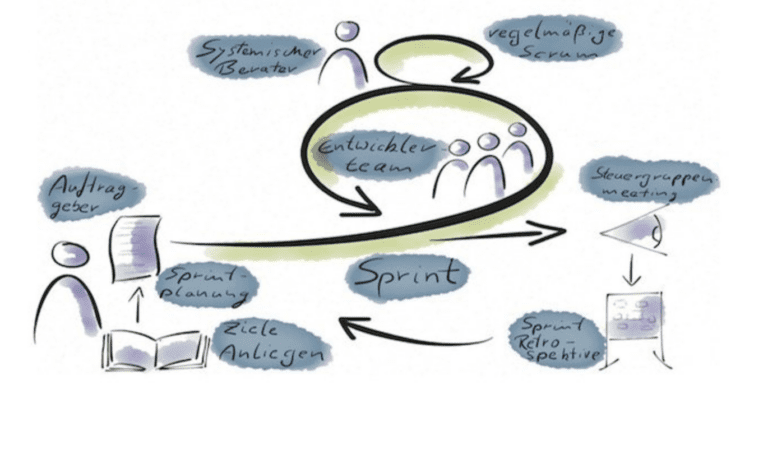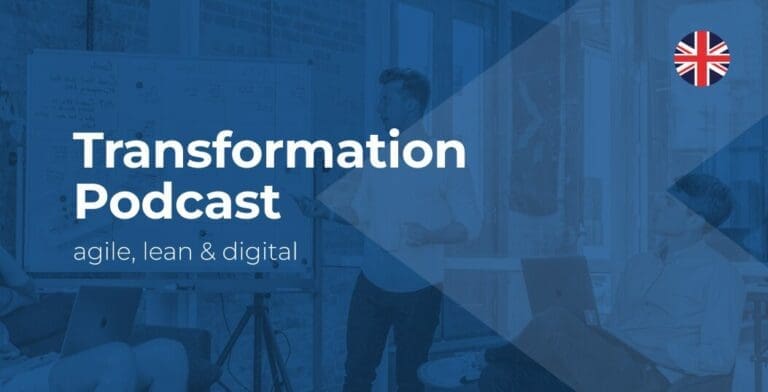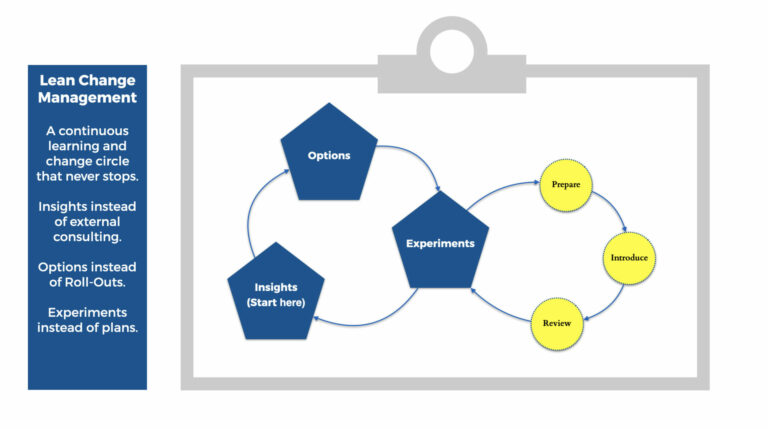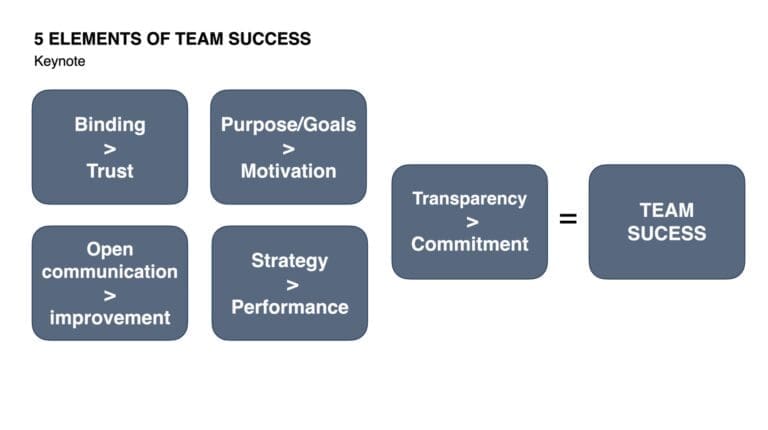Transforming R&D into an agile organization
While many are still talking about becoming an Agile Organizations we have already done it!
Together with Dr. Andreas Romberg and Dr. Christopher Brüggeman, I am really proud to have accomplished a successful transformation of a traditional R&D department at a large car manufacturer into a self-organized agile team based organization.

Dual operating system
We used Kotters idea of creating a dual operating system. The old line hierarchy has been kept giving the department the stability and connectivity it needs to interact with the rest of the organization. However, the newly launched highly decentralized Value Stream Teams take fast decisions towards their external customers. They are staffed with interdisciplinary competencies to enable the team to act quickly. These teams are backed by self-organized development teams that support with more detailed in-depth analysis and development services.
Agile Organisation
As a basic model for the new conception of the agile organization, we have drawn on the concept of the agile circle organization according to Bernd Oestereich and Claudia Schröder. Source “The collegially managed company” (Vahlen)
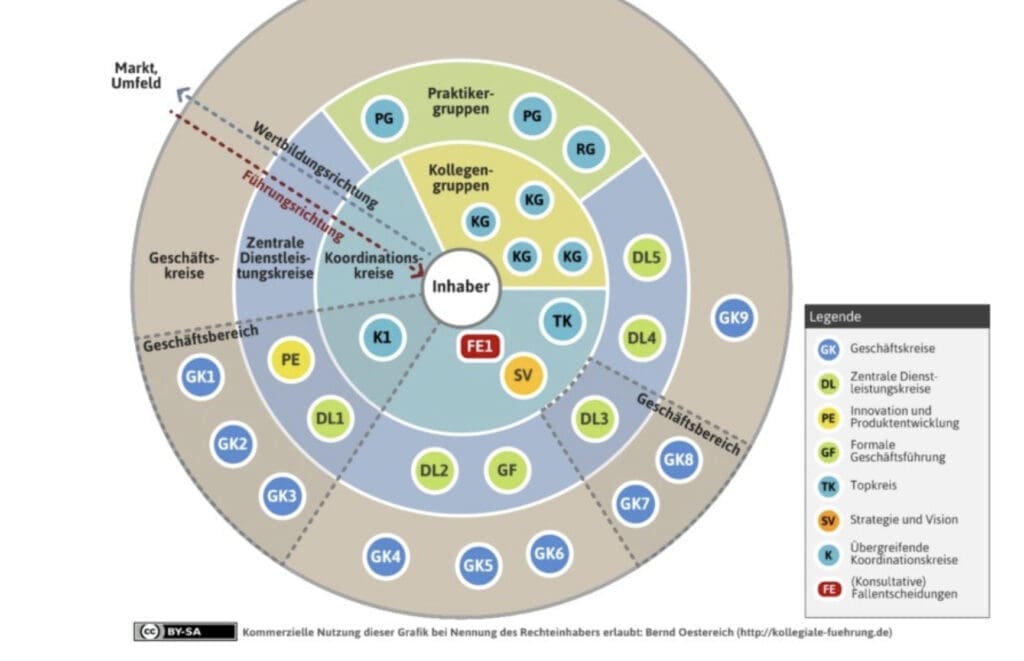
Core Elements: New agile organisation
- clearly defined value streams with identified customers
- self-organized, self-managed values stream teams
- self-organized, self-managed development teams
- coordination circles that solve conflicting goals or priorities
- circles that focus organizational tasks (e.g. Strategy, Budget, HR, CEO, Change Management)
- circles that focus on qualification (e.g. Tool development, Standards, Norms)
- a coherent workflow process from outside (Customer) to inside (Development teams) the agile organization
- clearly defined rules & principles to support the governance of the agile organization
- the separation of the disciplinary and subject matter expert leadership function
- the creation of roles instead of functions – the use of new decision-making tools like consent moderation or objection integration
- the possibility of having multiple team memberships and roles
- the quick creation & termination of development teams according to customer needs, without going through a lengthy reorganization and staffing procedures
- transparent performance management of each circle through shop floor management boards
- Using the line hierarchy for people leadership (e.g. disciplinary, people development, coaching, self-goals setting process)
- Promote and uplift old-line managers to become coaches in regard to leadership and subject matter regarding their own competencies
While not free of hierarchy this organization gives this client maximum agility to adapt to external change in development demand.
Looking back at the consulting process I would identify the following interventions as relevant to the success of the project:
From Shop Floor Management to Agile Organization
The project started out as Shop Floor Management implementation project. During the implementation process it became obvious that the client was showing all sign of “not invented here” symptoms and individuals made clear that the proposed standard implementation would not work in their work environment. We reflected with Top management and decided to not fight against this impulse, but to use the energy to adapt the shop floor boards to the needs of each team. We thus encouraged teams to come up with their ideas on how to make shop floor boards work and promoted self-organization within the teams.
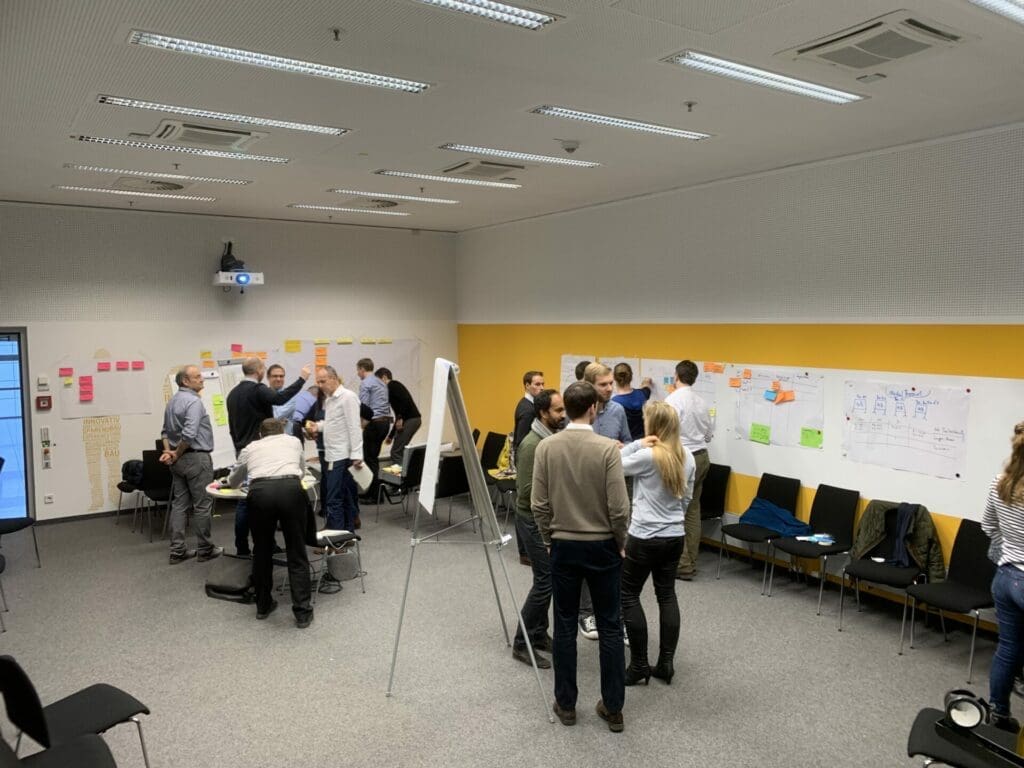
In parallel we were working with the extended management team on leadership culture and also had deep discussion on the differences between 3 different organization types: line hierarchy, value stream organization and agile organization. The management team concluded that the R&D organization needed to be developed beyond mere implementation of shop floor management to meet future customers’ demands due to VUCA world they were encountering at their interfaces.
Thus Top Management took a strategic decision to develop into an organization that would be the best mix between value stream (e.g. supportive leadership, value stream focus, focus on continuous improvement, people leadership) & agile organization (e.g. decentralized network organization, self organization, self-management, multiple team membership allowing for optimal capacity adjustments within.

Contact us now!
We have more than 20 years of experience and deliver high quality consulting for your Agile, Lean or Digital Transformation.
Defining core value streams
In a first step a project team was set up to define the core value streams to clarify interfaces to the outside. Four mayor value stream areas were identified. The work result was shared and helped the whole department to re-focus to meet their customer’s needs, instead of satisfying bureaucratic internal processes.
Organizational Re-Design
My colleague Christopher Brüggeman conducted a series of workshops in which the final operating model for the agile organization was defined. Reinhard Nagels concept of organization design was used to test the new organization model against carefully chosen criteria it needed to fulfil.
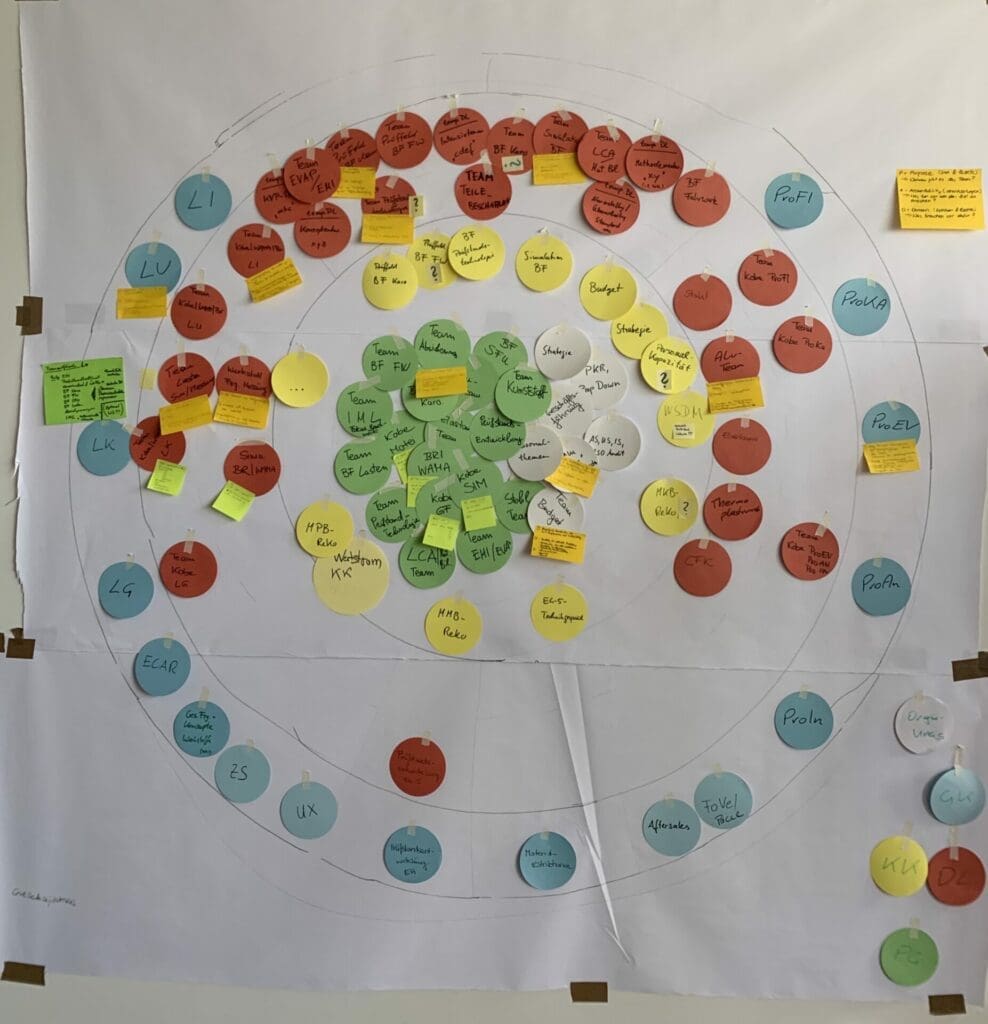
Learning to work with agenda free workshop settings
In the course of the project the client at first reluctantly learned to accept the advantage of agenda free workshop settings in which the agenda was developed on the spot by the workshop group. Being a very traditional manufacturing company used to having free aligned agendas it took quite some time for the client to realize how much more effective agenda free workshops turned out to be.
Creating mind-set change through leadership development
A series of 2 days leadership trainings on “Agile Organization & Agile Tools” helped a broad number of employees to understand the goal state and the new tools that would be used in the agile organization. Over time more and more employees became more and more affectionate about the concept of “going agile”.
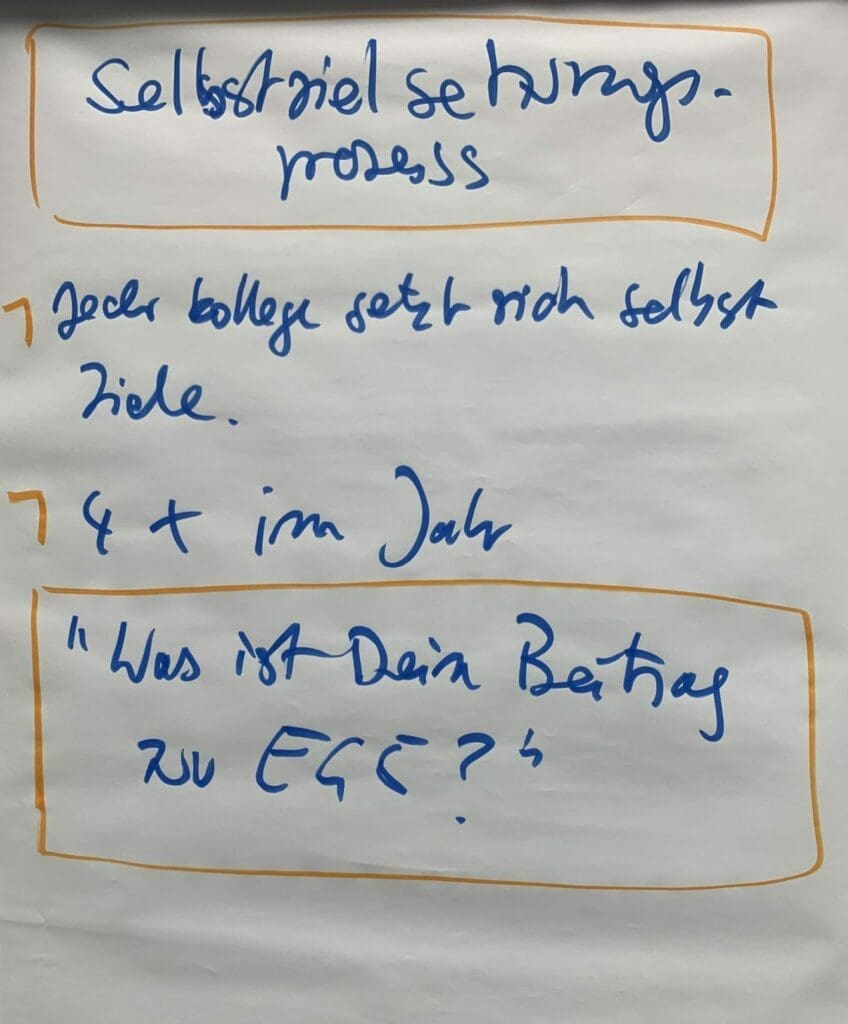
Creating break-through by using large scale group workshops
A break-through moment certainly have been a series of large scale “OpenSpace/Barcamp” workshops within the department. Agenda-free in nature the participants proposed their own workshop topics and invited their colleagues to join the discussion. From the first workshop ALL project topics were later transformed into improvement projects that were conducted inside the department. Within theses projects all relevant topics to enable the agile organization where tackled, such as: organization model, value streams, governance rules, adapted shop floor management concept, separation of the disciplinary and subject matter expert leadership function e.g.
Clearly these large group workshops were a key factor in releasing the energy in the department to a achieve a critical mass for the transformations process.
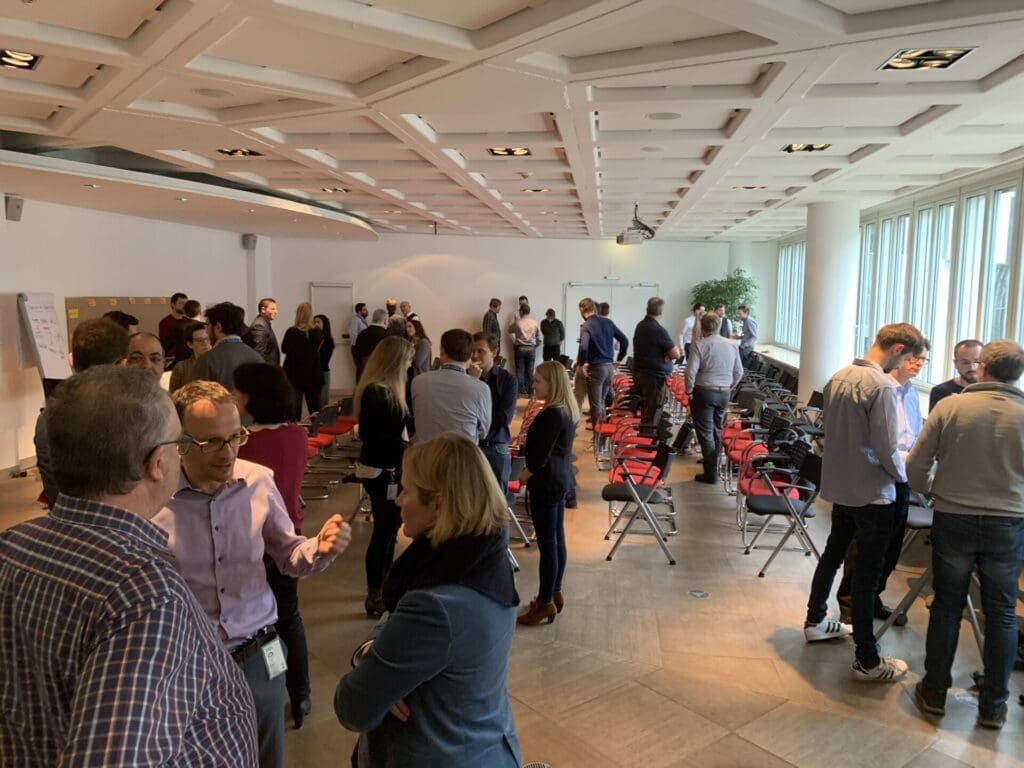
Supporting the creation of new value stream teams and development teams
Finally we invested a lot of time and effort to support the newly created value stream teams and development teams in their constitution. This process is actually still on-going. Teams need help to move from the old world to the new world, even if everyone in the team wants the change.
The famous saying that self-organization or self-management is NOT equal to self-cession, proved to be true.
Changes on 4 Levels of the organization
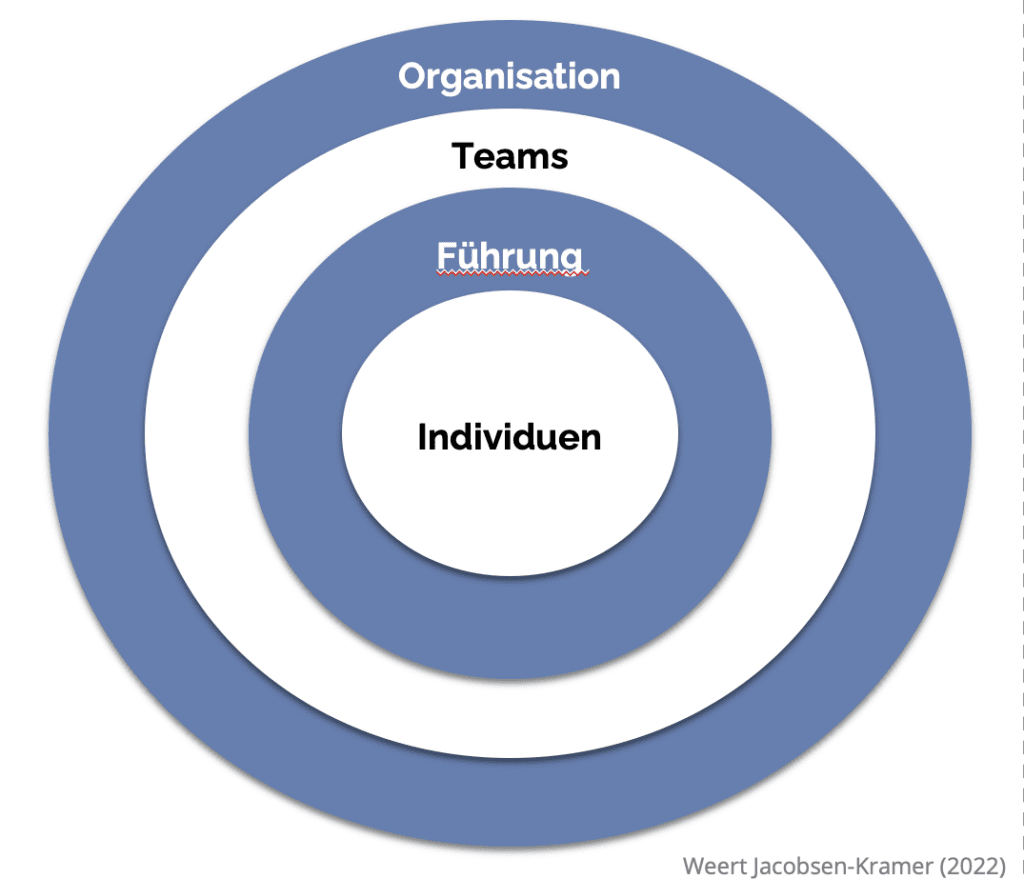
The introduction of an agile organisation brings about significant changes in the work system. These changes can be illustrated using the categories of the ‘4 levels of change’ model developed by Weert Jacobsen-Kramer.
1) Individual employees
All projects and tasks in the work system are 100% transparent in terms of completion and execution. This means that the performance and delivery performance of individual employees is visible.
The introduction of the new role of ‘representatives’ means that individual employees make more independent decisions.
The ‘representatives’ are employees of specialised teams who collaborate with other colleagues in the team as participants in regular communication in project teams / value stream teams. The ‘representatives’ decide independently and directly on site in the regular communication on the execution of work packages.
The introduction of cross-functional and cross-location project teams / value stream teams means that individual employees now collaborate in several teams within the work system. In addition to the home team, employees work in various other teams in a self-organised manner.
There will be employees who do not like this new transparency and dynamic in the work system. Some employees will therefore leave the system of their own accord. With other colleagues, they will realise that it no longer ‘fits’. The good news is that you will find new colleagues on the labour market who are looking for transparency and dynamism in the work system and find it attractive.
2) Leadership
The role of your managers will change so that you spend more time in a coaching role. They take on the responsibility of developing their employees to make more decisions and support them to move with ease and confidence in the dynamic environment of multi-project management and cross-functional and cross-location project teams / value stream teams.
The job of managers is changing in that they are disciplined in performing the 6 tasks of leadership on the shop floor/emba: 1) Performing daily rule communication 2) Making decisions in daily rule communication 3) Performing ‘Go & See’ 4) Problem solving on site 5) Performing process confirmation 6) Focusing on the continuous improvement process (CIP).
Despite the training provided to support your managers, you will find that some of your managers have the necessary level to fulfil the above tasks, while other managers do not.
3) Teams
The introduction of self-organised, self-managed cross-functional and cross-location project teams and development teams is naturally also accompanied by a substantial change in the teams.
Multiple team membership and the increased dynamics and transparency in task processing also lead to an increase in conflicts of objectives or priorities that were previously resolved by the manager.
The increased demands on self-organisation and self-management mean that employees in different teams resolve these conflicts of objectives or priorities independently at the same time.
However, because conflicts of objectives or priorities cannot always be resolved immediately and independently by employees on site, participation in extended coordination circles is required in order to resolve these issues.
4) Organisation
Neighbouring work areas and functions are influenced by the transparency and dynamics of the new work system. They are required to actively participate and make decisions in the regular communications in shop floor management.
Therefore, the neighbouring work areas and functions should also be informed about the new work system and the new requirements.
There is a natural tendency for the changes in the work system to spread throughout the organisation because the new work system is simply more effective.
The introduction of the agile organisation is therefore a major cultural change throughout the company.
Consequences for top management
In the agile organisation, the increase in decision-making speed in the work system leads to an increased need for joint strategy development.
The higher speed of decision-making leads to greater deviation from the original strategy, which in turn necessitates more frequent strategy alignment throughout the organisation during the year.
Typically, the division spends 2 full workshop days in January each year reviewing the vision, planning the annual strategic objectives and actions. In addition, agile organisations invest one day per quarter in aligning the strategy with previous implementation according to the principle of ‘closely aligned and loosely coupled’.
The increase in the speed of decision-making in the work system also means that the number of conflicts of objectives or priorities that are escalated to top management can increase.
For top management, this means that the need for strategy development and implementation and rapid decision-making increases overall.
Results
With all the advantages of an agile organization for the cooperation it does not come for free. You will need to invest into cooperation and teamwork on an on-going bases.
However comparing the past-state to the current-state the effort is absolutely worth it. The performance of the main department has improved strongly in all performance indicators, such as with regard to customer satisfaction, productivity, profitability, quality, delivery on time e.g..
In addition, there was a substantial boost in motivation and the project paid off on the most important element of any company: a positive corporate culture!
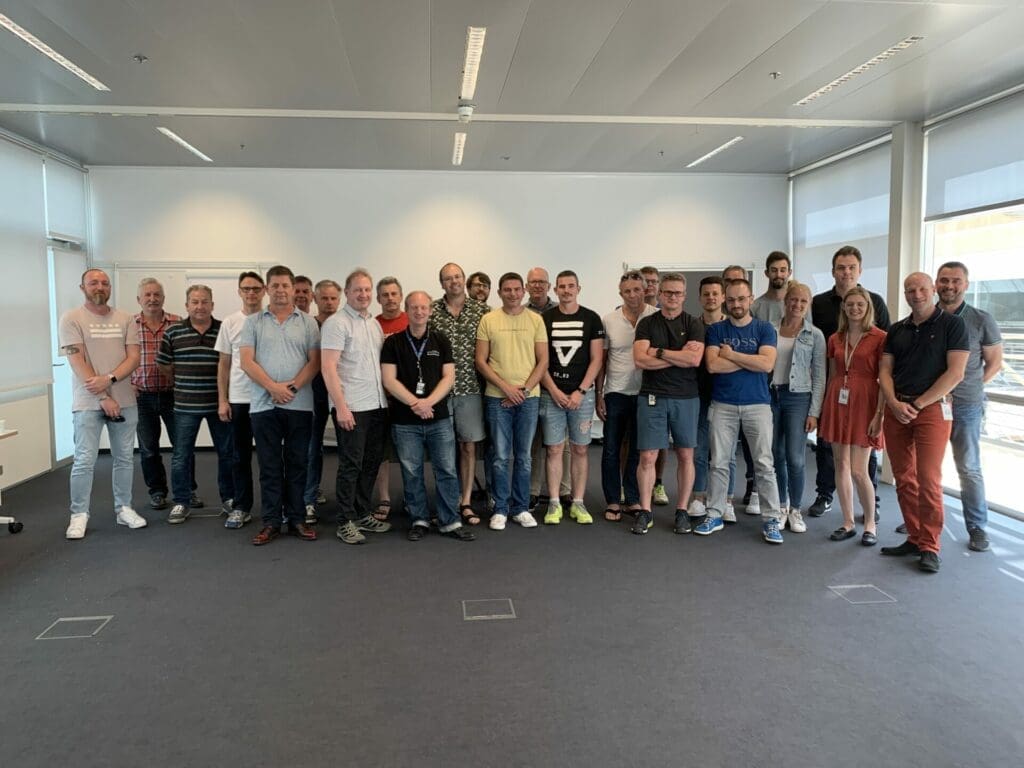
If you liked this article, please leave a comment below.
If you have any questions, please reach out to me and we can discuss further.

Contact us now!
We have more than 20 years of experience and deliver high quality consulting for your Agile, Lean or Digital Transformation.

